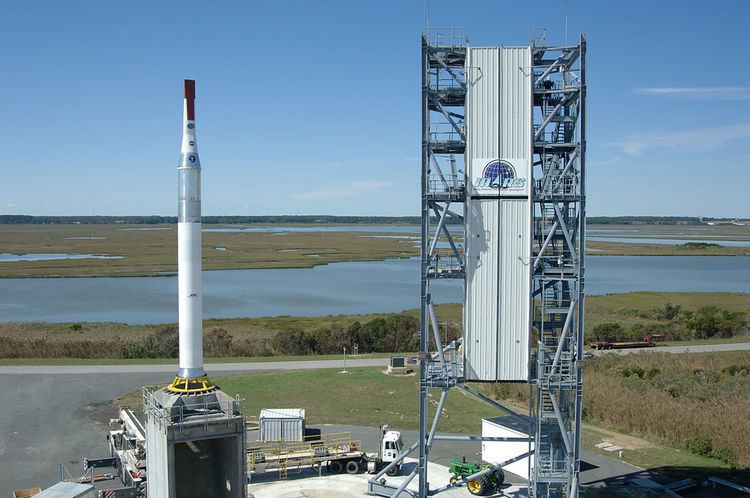Height 54 feet Mass Unknown | Country of origin United States Diameter 5 feet | |
 | ||
Function Sub-Orbital Test Vehicle | ||
ALV X-1 was to be a sounding rocket flight of a vehicle developed by Alliant Techsystems called the ATK Launch Vehicle (ALV). The rocket carried the SOAREX-VI and Hy-BoLT experiments as payloads. The flight was launched at 09:10 GMT on August 22, 2008, and then the rocket was intentionally destroyed 20 seconds into flight after veering too far off course. Launch occurred from LP-0B at the Mid-Atlantic Regional Spaceport (MARS) at NASA's Wallops Flight Facility.
Contents
Hy-BoLT
The Hypersonic Boundary Layer Transition (Hy-BoLT) experiment payload was sponsored by the Hypersonics Project within the Fundamental Aeronautics Program of NASA. Hy-BoLT was a wedge-shaped payload that would have provided "valuable data on the fundamental physics of high-Mach flight." It would have been launched to an altitude of 250 miles (400 km), transmitting various temperatures and pressures on different parts of the vehicle's surface.
During the flight, Hy-BoLT transmitted data as expected for the first 20 seconds until it was destroyed when the rocket was detonated.
SOAREX-VI
Sub-Orbital Aerodynamic Re-entry EXperiments VI (SOAREX-VI) was sponsored by the Hypersonics Project within the Fundamental Aeronautics Program of NASA, and developed by NASA's Ames Research Center. It was carried by the ALV X-1 as a secondary payload. SOAREX-VI would have attempted to characterize an innovative self-orienting reentry vehicle shape called the Slotted Compression RAMP (SCRAMP) probe. The SOAREX-VI package also included an atmospheric density calibration probe built by NASA Ames in cooperation with the University of Idaho, and an AIS probe built by the United States Naval Research Laboratory (NRL).
After detonation of the rocket, the SOAREX-VI enclosure inside was broken open. The SCRAMP probe, designed to activate upon ejection, did exactly that and acquired two TDRSS satellites overhead and an S-band tracking dish on land. It transmitted sensor and video data until it was destroyed on splashdown.
